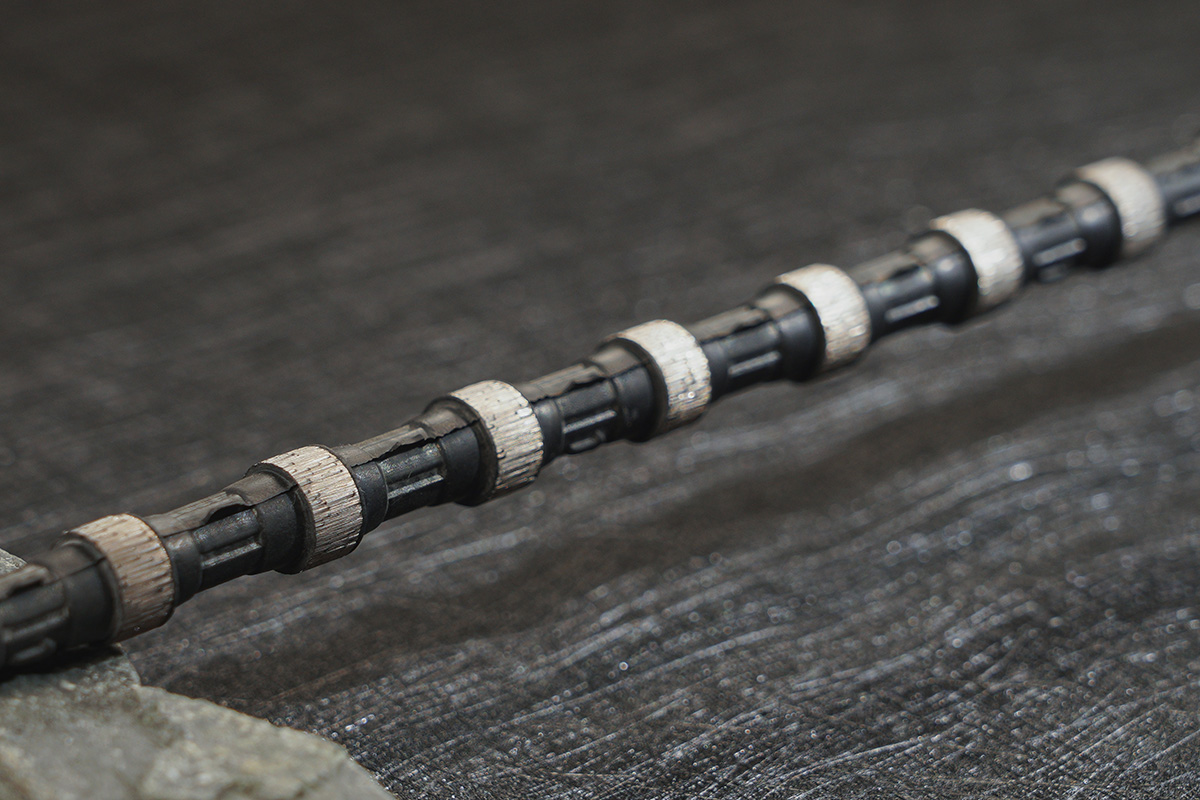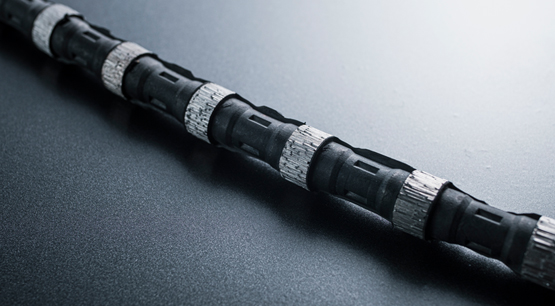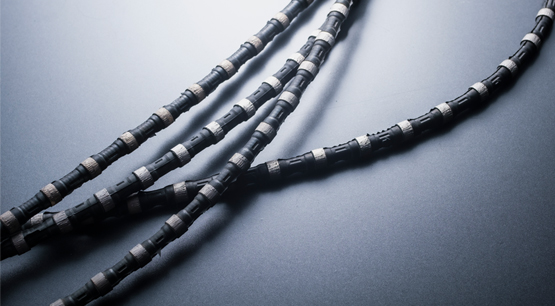The drilling and tapping process of diamond wire saw refers to an important process step in the production of diamond wire saw, which is used to make holes and tooth grooves on the wire rope so as to fix the diamond beads on the wire rope.

Drilling refers to drilling holes in the wire rope to prepare for subsequent alveolar fabrication. This secures the diamond bead on the wire rope, ensuring that it is positioned correctly and held securely. Drilling is usually done with a drill or similar tool, the exact size and shape will vary according to the design and requirements of the diamond wire saw.
Tapping refers to making tooth grooves on the wire rope after drilling to fix the diamond beads. These sockets can be critical parts of the wire saw, and the sockets hold the diamond beads securely on the wire rope, preventing them from slipping or falling off. Tapping is usually performed with a tapping tool, and depending on the design and requirements of the wire saw, the shape and size of the sockets will vary.
The drilling and tapping process is a key step in the diamond wire saw manufacturing process, which directly affects the quality and performance of the wire saw. The accuracy, firmness and consistency of drilling and tapping are very important to ensure that the diamond beads will not fall off or loosen during use, while ensuring the cutting effect and life of the wire saw.
Tapping is a key step in the manufacturing process of diamond wire saws and usually involves the following specific steps:
1: Preparation: Prepare the diamond wire saw and the corresponding tapping tools that need to be tapped.
2: Positioning: Determine the position and quantity of the teeth that need to be tapped, usually according to the design requirements and the number of diamond beads.
3: Clamp the wire saw: Use a special clamp or clamping device to fix the diamond wire saw in an appropriate position to ensure that the wire saw is stable and does not move.
4: Tapping tool selection: Select the appropriate tapping tool according to the design requirements of the wire saw and the shape of the tooth socket to be made. Tapping tools are usually tools with cutting edges used to cut wire ropes to make tooth sockets.
5: Tapping operation: Aim the selected tapping tool at the anchor point on the wire saw, and then use appropriate force and speed to cut. Multiple cuts may be required to achieve the desired alveolar shape and depth, as needed.
6: Cleaning and inspection: After tapping, clean the wire saw to remove any metal shavings or dirt that may remain. The socket is then carefully inspected for compliance, ensuring its shape, depth and consistency.
The specific machines and tools used depend on the manufacturer’s production process and equipment configuration. Generally speaking, tapping can be carried out with equipment such as hand-held tapping tools, drill presses, and tapping machines. Tapping machines are usually equipment specially designed for diamond wire saw manufacturing, with precise positioning and cutting functions, which can improve production efficiency and consistency of tooth sockets. The manufacturer selects suitable equipment and tools according to the production scale and needs to complete the tapping process.
Removing oil stains after tapping is an important step and has the following main benefits:
1: Clean the surface: Lubricants or coolants may be used during the tapping process to reduce friction and heat, and these liquids will adhere to the surface of the diamond wire saw to form oil stains. Removing oil stains cleans the surface and ensures that no lubricant or coolant remains.
2: Improve the bonding strength: Diamond wire saws usually fix the diamond beads on the wire rope by welding and other processes. Removing oil stains can make the bonding surface between diamond beads and steel wire rope cleaner and cleaner, and improve the strength and reliability of bonding.
3: Enhanced lubrication effect: After removing oil stains, if lubrication or cooling is required again, the new lubricant or coolant can better adhere to the surface of the diamond wire saw, providing better lubrication and cooling effects, reducing friction and heat .
4: Increase surface roughness: Sometimes the surface of the diamond wire saw needs to have a certain roughness to increase the friction and cutting efficiency with the object to be cut. Removing oil stains can increase the roughness of the surface and improve cutting performance.
In conclusion, removing oil stains after tapping can ensure the cleanliness and bonding strength of the diamond wire saw surface, provide better lubrication and cooling effects, and increase surface roughness at the same time, thereby improving cutting performance and working efficiency.








